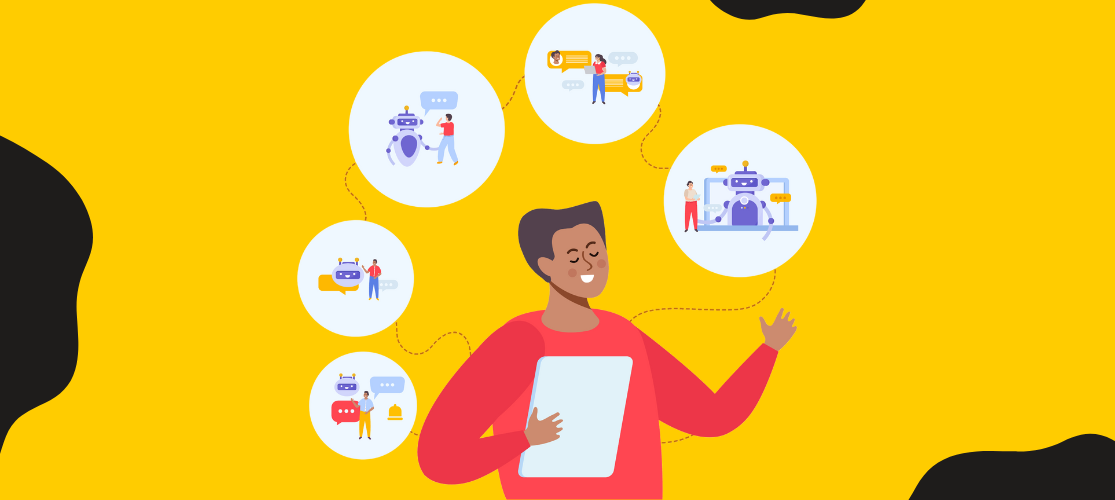If you haven’t already heard about the new-age AI phenomenon, ChatGPT, then we’re just going to assume you’ve been living under a rock for the last few months. If you really, truly haven’t heard anything about it or you have an idea of what it is but nothing more than that, then we suggest you read up on what ChatGPT is and why it’s being talked about so much.
On the other hand, if you have heard of ChatGPT, you might be wondering how exactly you can harness this new tool for your business. Well, that is exactly what we’ll be exploring throughout this article.
How can you use ChatGPT for your business?
Before we start we just want to warn you. ChatGPT is a tool and should be looked at and used this way. It is not some kind of cheat code that you can use to just do all your work for you. It only works with the data it’s been fed via the internet and isn’t updated as regularly as you would need it to.
Whilst the bot’s charming, witty and conversational demeanor makes it enjoyable to use as a novelty gadget, it can also be used to assist with some business tasks too. Not in a way that it will replace you, but more in the sense that it can be used to help increase productivity by automating tasks. And automation is key to effective workflow. We already use automation and research tools in our business lives, so why not add another to your wheelhouse?
1. Write headlines & subheadings
Hitting some of that writer’s block? Well, if you give ChatGPT the flour, it’ll make the bread. After all, it can sometimes be tricky to think of engaging headings and titles that won’t just make your blog get lost in the sea of millions of other articles just like yours. If you have certain keywords you want to be included too, just ask and ChatGPT will generate headings including these.
Examples:
Write 5 headlines for articles about cows
Write 3 subheadings for article idea 3


2. Generate article ideas
With there being thousands and thousands of articles out there on the world wide web, it can be a little difficult to think of ideas for a chosen subject and know what to write. You can use ChatGPT to help generate some ideas for articles and to also provide a rough framework to follow too. Although it’s a good starting point, we wouldn’t advise following the structure to a T. Why? Well if you actually want to drive visitors and interest to your blog, you’ll need to make sure it’s tailored for SEO so the blueprint the bot provides may not provide those bountiful results you’re searching for.
Examples:
Write me a structure for an article about British wildlife
Generate 10 ideas for articles about coffee beans
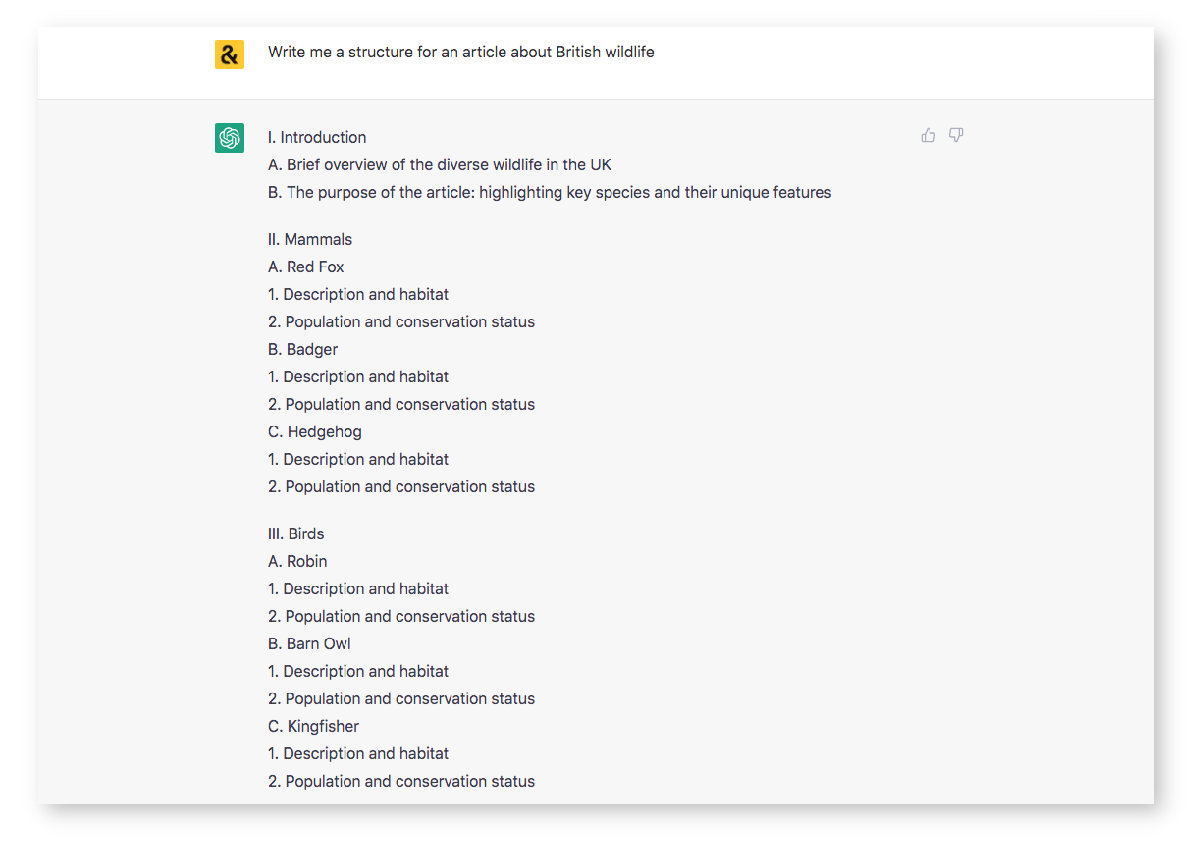
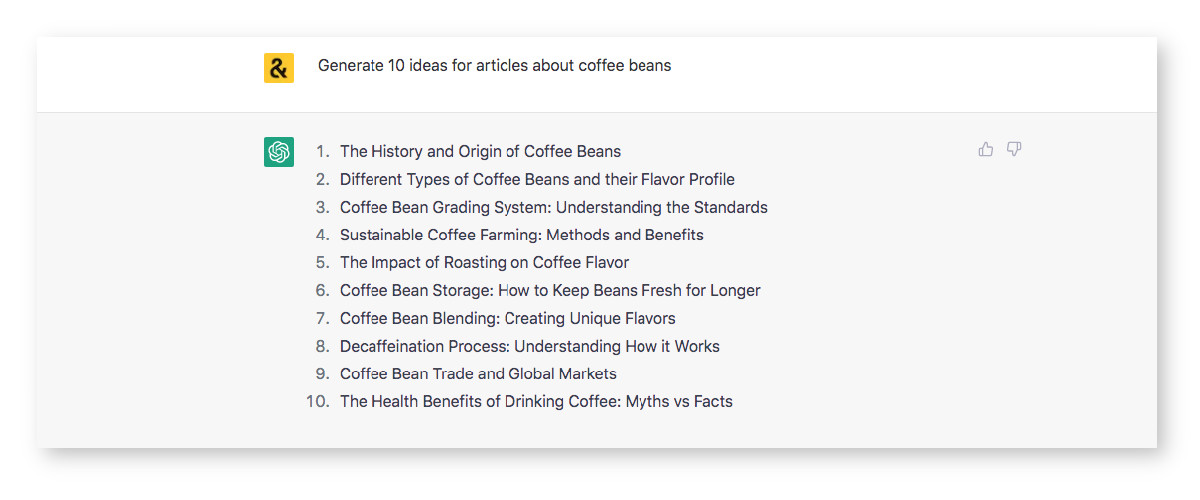
Let’s address something quickly.
We’ve seen a few occasions where the bot has been used as an attempt to write entire articles to try and cut some corners. It really isn’t that easy. The information the bot collects and provides is subject to being biased and isn’t all that unique no matter how creative it is with its words.
It’s also actually quite risky to use ChatGPT-generated content to publish blogs out into the plains of Google. Because not only can Google detect when content has been written by a bot, but it also flags it as spam, meaning the content might not even get 30 minutes under the search engine spotlight.
3. Generate hashtags for social media posts
Hashtags may seem like just a nice little addition to social media posts to stay hip with the kids, but they actually serve a bigger purpose. Hashtags on social posts help them to reach the kind of audiences you’ll want to engage with your posts. Hence, the more the merrier, especially on platforms like Instagram. But generating and collating handfuls of hashtags for these can be time-consuming in itself.
Examples:
Generate 20 hashtags about fashion that I can use on Instagram
Generate 10 hashtags about sales prospecting that I can use on LinkedIn

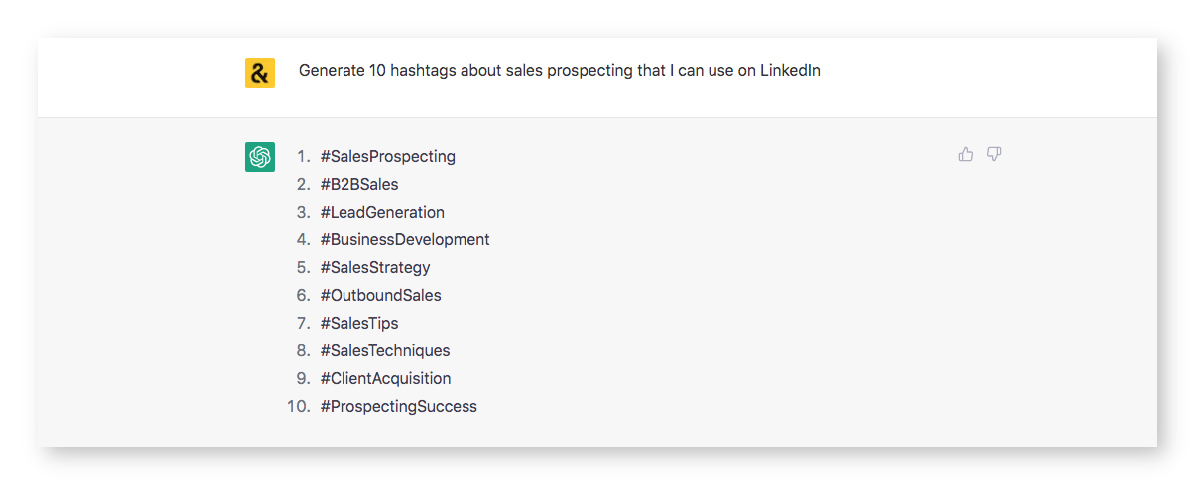
4. Write code
Considering ChatGPT is part of the tech family, you’d hope it could do at least a little bit of coding. Well, increase that bar of expectations because it can both write and debug code, lots of it, and in multiple programming languages too. However, the more specific you are with your input on the requirements of the code, the better the results will be that the chatbot can produce.
Examples:
Write some code to create a simple login form using HTML
Can you debug this piece of code [insert your code snippet here]
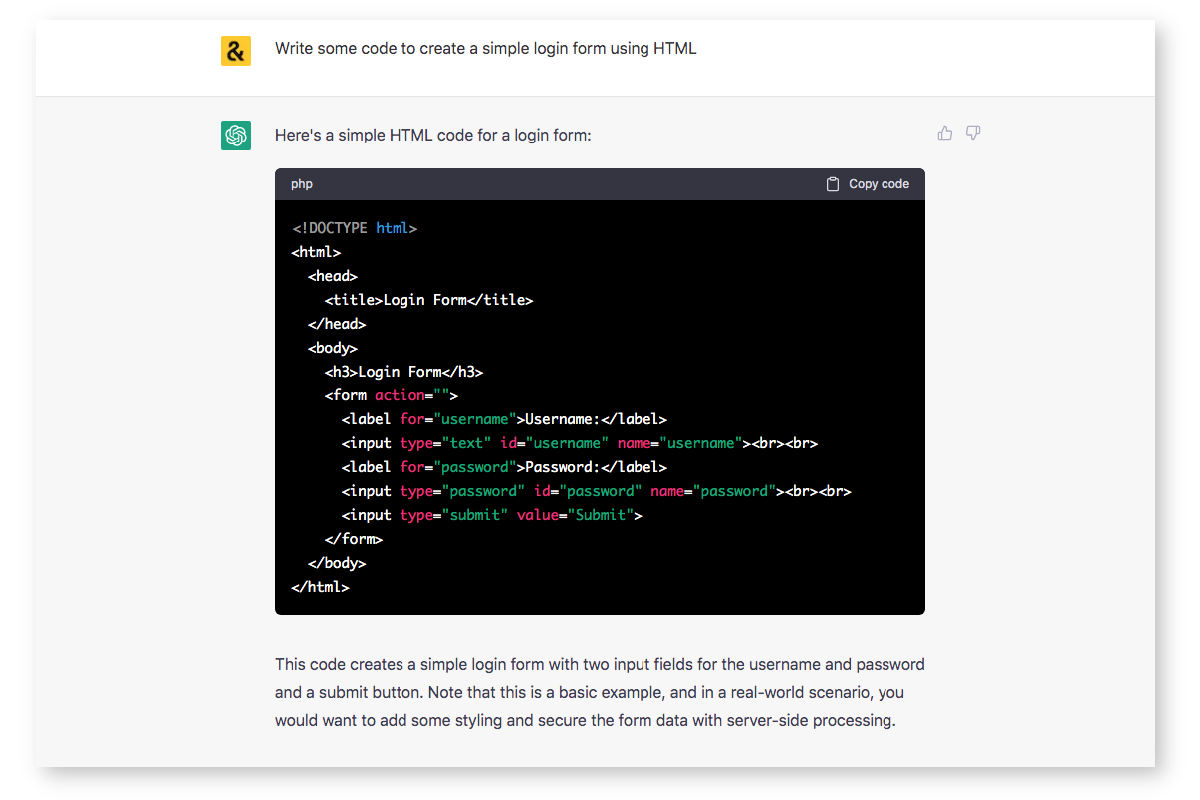
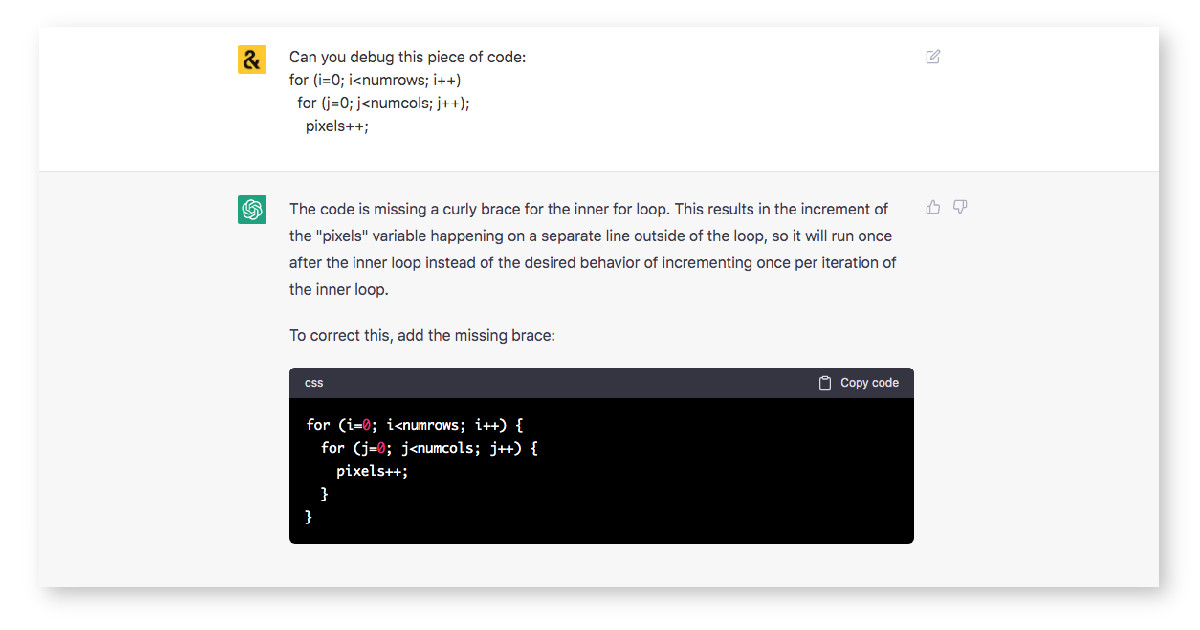
5. Draft a script for a video
If video content or podcasts are something you currently do or are wanting to begin, you’ll find the process much easier to follow with a script. Now if you’re writing a script about something you’re a pro in, you can guarantee the information you’ll have is far superior to that of what ChatGPT has sourced. But it can be used as a bit of a guide for your video script.
Examples:
Write me a script for a 5-minute long video about the benefits of walking
Generate some talking points to include in a podcast about technology
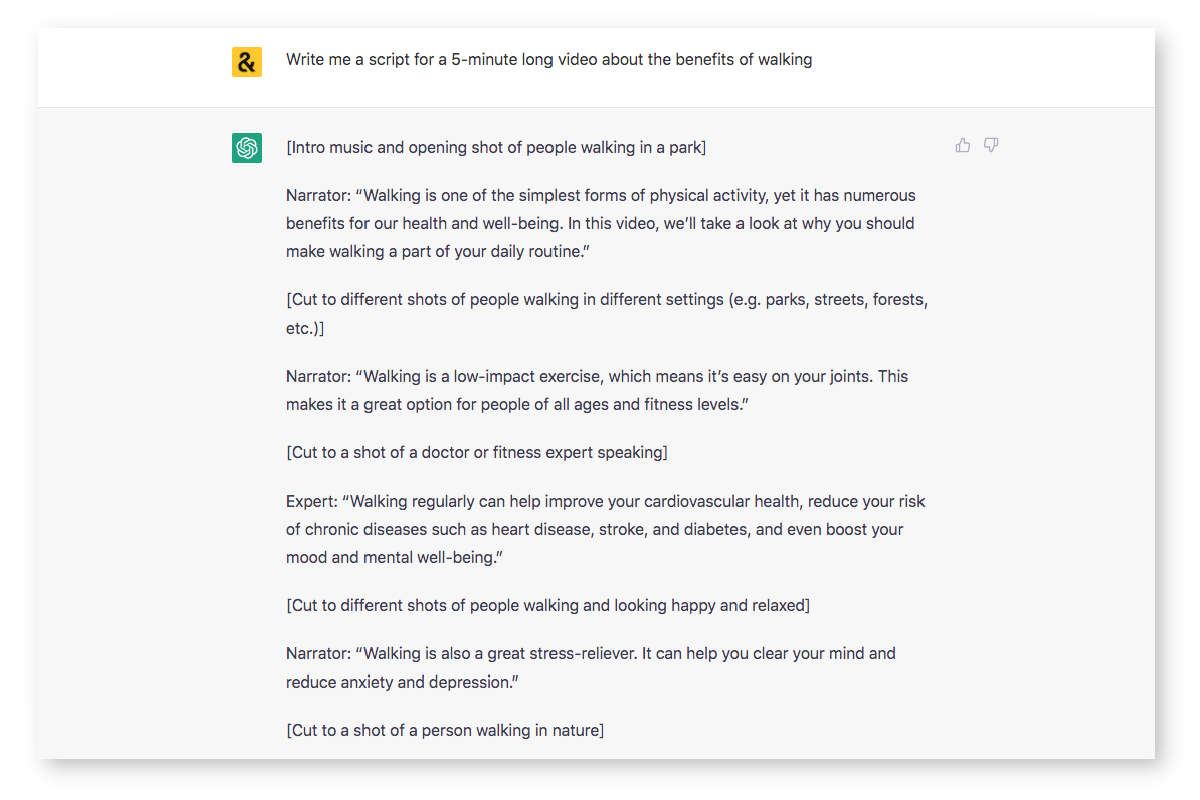
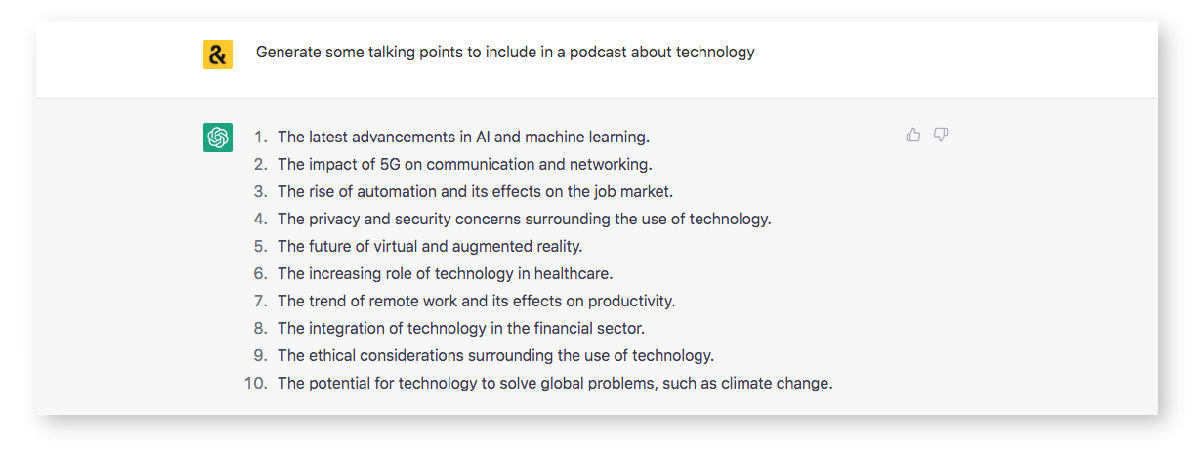
6. Come up with new business names
As the number of businesses increases, the availability of names decreases. And naming a business is no easy undertaking. It can sometimes take weeks, months, or even years to come up with a good business name. But our newfound chatbot friend can help to pull something out of its digital hat. Just make sure to check that the names it suggests are viable and free to grab using a business name checker.
Examples:
Generate 5 business names I can use for an accountancy firm business
Generate some fun business name ideas for a dog grooming business

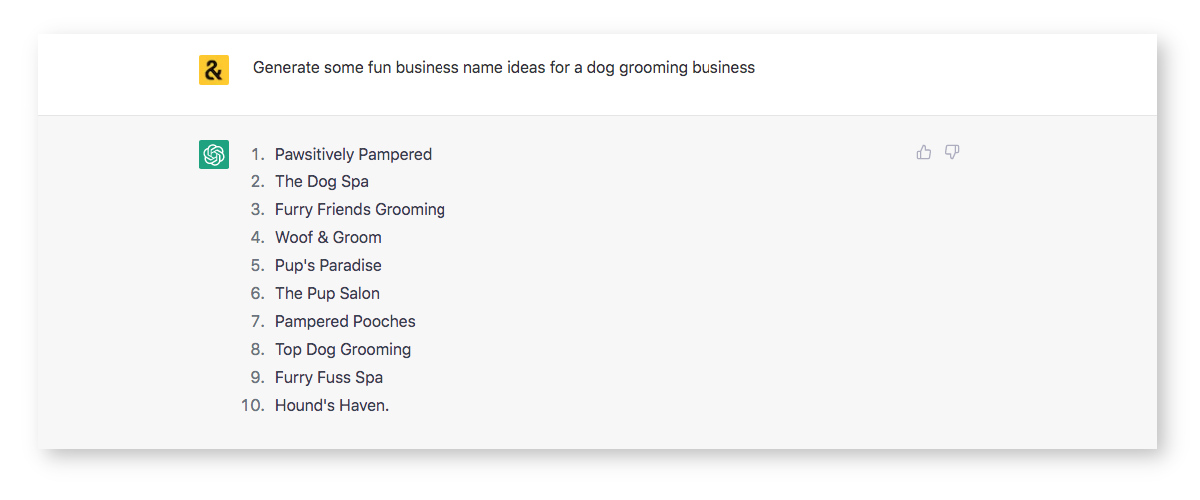
7. Generate subject lines
Similarly to the headings/subheadings idea, you can use ChatGPT to come up with some catchy email subject lines. Without a strong and compelling subject line, your audience won’t even click through to read the email, reflecting poorly on your analytics. And because emails aren’t monitored through the watchful eyes of Google, you don’t need to worry about them being flagged as spam. Although, who’s to say that your emails won’t be detected as spam?
Examples:
Generate some subject lines for an email about selling shampoo in order to generate clicks
Write 5 email subject line examples for a dentistry service
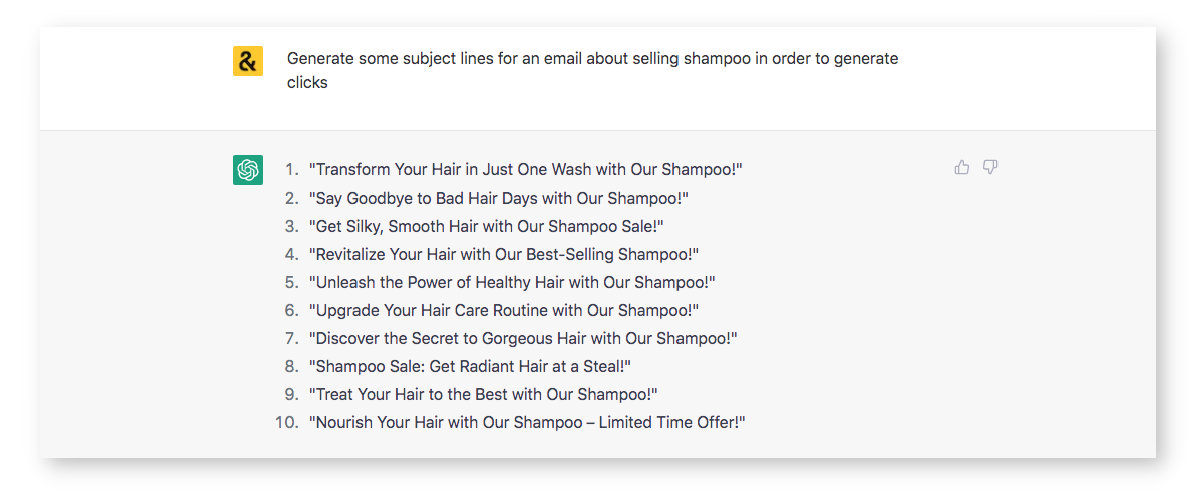

8. Research
If ChatGPT and Google were thrown into a cyber arena, which would come out victorious? Perhaps a question for another day but the point is you can use ChatGPT to conduct research on a given topic, potentially saving you hours and hours of scrawling through the internet. Although it’s been proven that whilst it gives out information at a fast pace that appears to be sound, sometimes it actually misinforms. Just make sure you fact-check before taking what it says as gospel.
Examples:
What is the difference between skimmed, semi-skimmed, and whole milk?
Who invented the lightbulb?


9. Generate templates
Nobody enjoys doing the menial tasks in business like writing out small print documents such as terms and conditions or privacy policies. But once again, that automation functionality of ChatGPT is here to save the day. Instead of you having to spend countless hours drafting something up or swiping one from someone else’s website, you can just give the prompt to the bot to handle.
Examples:
Write an outline for some terms & conditions to use for an e-commerce business
Generate a draft of a privacy policy to add to an IT website
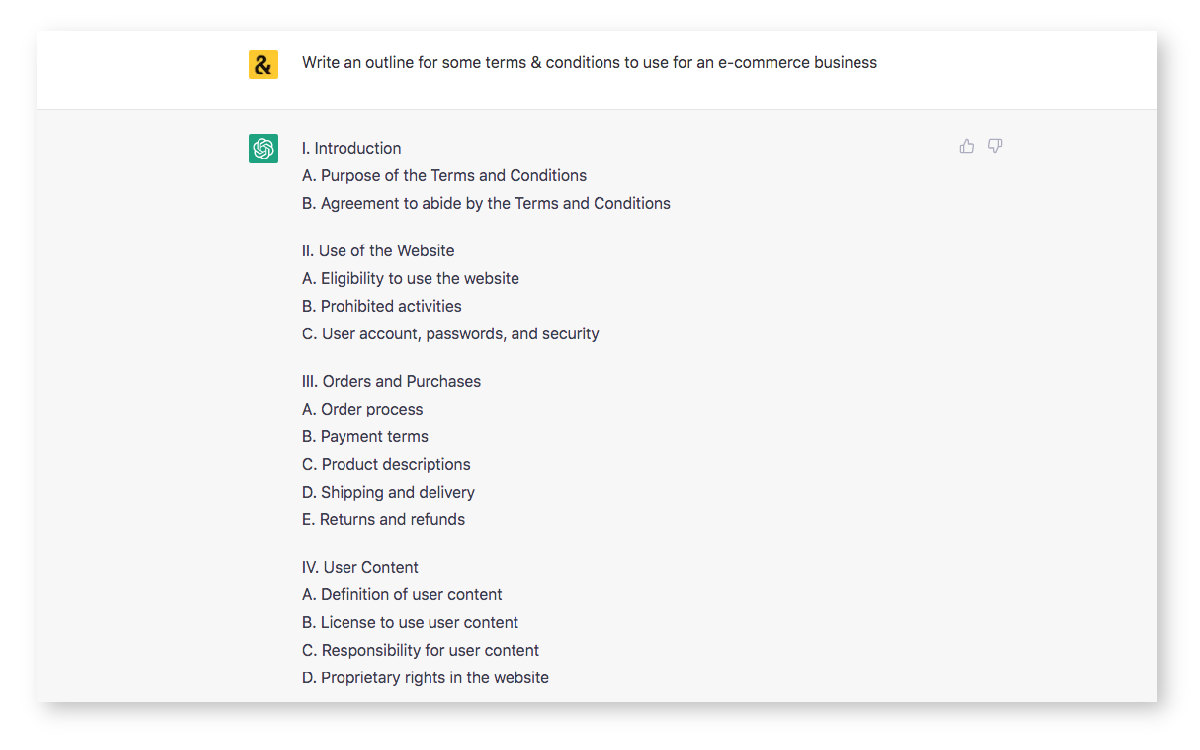
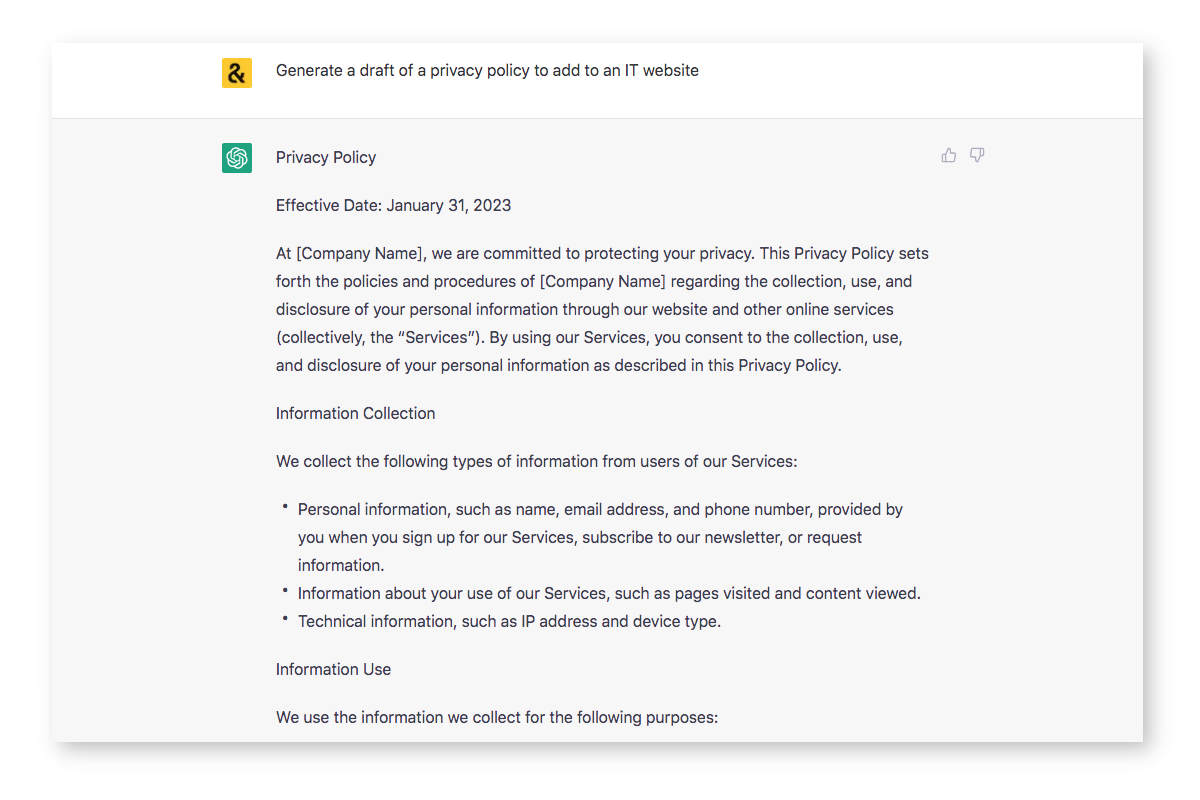
10. Translate text
As much as we’d all like to be fluent in every language ever, we’re just not naturally bilingual without dedicating years of learning. ChatGPT can translate text to any language you’d like it to. Language barriers be gone!
Examples:
Translate this text into French: [Insert text here]
How do you say ‘It was lovely meeting you’ in German?


Our takeaway
If you’re buying, then some Rogan Josh from the local Indian spot would be great.
Oh, our takeaway from this blog! Well, it’s easy to think of this powerful new chat tool as a replacement for people but this will not be happening any time soon. It is just a tool, much like the tools we use to automate other business tasks.
When using ChatGPT, you’ll want to be as specific as possible. The more specific the prompt you give the bot, the better the results you’ll get.
And finally and most importantly, always proofread and fact-check the outputs you get from your query. As we’ve mentioned, the bot is not always 100% correct and could easily fool someone who may skim past information. What we have in experience, emotion, and experience, ChatGPT does not.
In its current manner, ChatGPT is a great tool to help streamline processes, automate tasks, and use alongside your current business tools.


